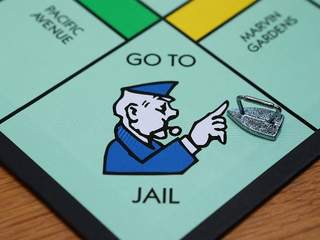A Google penalty can have a tremendous impact on the success of a business, and should be avoided at all costs. However, if you’ve found yourself on the receiving end of a penalty, as a result of negative SEO tactics or poor SEO management, you need to take immediate steps to appease Google and have the penalty removed.
Common causes of penalties
There are a couple of practices that will put you in Google’s crosshairs quickly: Sending free widgets to multiple sites to encourage a review or backlinks is a big no, as is paying for links for third parties. In a similar vein is the overusing of web directories to publicise your site. All of these causes fall under the ‘spam’ category for Google, and you run the risk of being punished.
There was a recent Forbes article about a new trend called ‘Negative SEO’, where businesses deliberately sign their competition up for poor SEO practices and let the Google algorithms do the job for them. There’s not much you can do to prevent it, other than monitoring links to your site religiously and reporting any suspicious links to your website to Google beforehand in the hope of enlisting their aid rather than being on the receiving end of a penalty.
Google’s conditions
When a site is relayed by the algorithm to a human head at Google, there are a few questions they’ll be asking themselves:
- Was the link picked by the site webmaster with no external input?
- Did the site webmaster choose what the link anchor text would say and where it would direct to themselves?
- Is the link naturally placed? Would it encourage a click for a human, or is it just there to provide a backlink?
These are the kinds of questions you should be asking yourself when you create a link, or send out a widget. If you’re even slightly unsure, don’t do it.
Putting Things Right
First and foremost, you need to move fast. If you take your time making the changes, then you may end up meeting out-of-date conditions and, as a result, see no improvement to your ranking.
Set out to clear everything. Don’t just think that you can show your willingness by removing or disavowing a few links and have your ranking restored. Your objective should be to have every single bad link pointed out by Webmaster Tools and other third party tools like Moz and Majestic removed.
Don’t just try to remove these links once either. If at first you don’t succeed, keep pushing to have them removed. And document your attempts. Every email and request you send should be saved in an easily readable spreadsheet as evidence. To remove these links you are likely going to have to open up old forum accounts, and contact websites you may no longer have a relationship with. For the latter, work to get in touch with a human being. Send multiple emails, reach out to them on social media, maybe even get them on the phone. It’s much easier to get this solved when you get humans involved.
Once you’re in contact with the webmasters of the pages containing the bad links, make it as easy as possible for them to remove them. Provide them with exact URLs, dates, whatever they need you should already have. They have no real obligation to help you, so make the process as painless as possible.
Documentation
This was mentioned in a previous section, but it bears repeating on its own. Track all the links you’ve removed or disavowed in a spreadsheet. Be very clear about the actions you’ve taken for each link, and the amount of times you’ve attempted to have a link cleared. This is going to be very important for the next stage, when you get in touch with Google.
Think About the Human Element
Whilst Google does have algorithmic penalties, if you’re submitting a reconsideration request then you’ll certainly be dealing with a person. Once you get to the stage of having a penalty removed you’ll absolutely be dealing with people. So behave appropriately. Be polite, don’t accuse them of making a mistake, accept responsibility and show that you want to make a change.
You should have your own list of all your site’s bad practices; make it clear that you understand the mistakes that were made. Outline the efforts that were made to clean up the bad links (this is where the spreadsheet comes into play) and that any bad links that may still be up, are not there for lack of trying.
It also helps to outline what you’re doing to prevent future penalties at all levels. Think of Google as the stern headmaster who doesn’t want to ever see you in their office again and you’re not far off. They’re looking for genuine admissions of guilt, so show them that you fully intend to make changes.
Act Fast, Be Humble
That’s the key phrase to keep in mind when dealing with a Google penalty. As soon as webmaster tools alerts you to your penalty, you should leap into action. The faster you act, the more help you’re likely to get from Google, and the more open they will be to returning your business to its previous rank.
THE word in professional, persuasive, digital writing. Specialists in writing, tweeting and social sharing for businesses across the globe.
Get more leads, make more sales, grow your brand faster.






